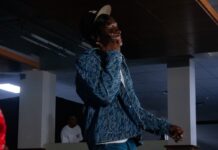On paper, The Conjuring is the type of film that would benefit from a cinematic universe—or at least several sequels.
Ed and Lorraine Warren, the real-life paranormal researchers portrayed in the series by Patrick Wilson and Vera Farmiga, have investigated hundreds of different cases all over the world, leaving many stories untold.
The two main Conjuring films were fantastic; they used atmosphere and production design to facilitate dread, and earned scares rather than relying exclusively on cheap shock value.
The first Annabelle, based on the possessed doll from The Conjuring, was a far more conventional and tame Rosemary’s Baby homage. Its sequel, Annabelle: Creation, delivered some enjoyable thrills while also benefitting from its period piece decoration.
Which brings us to The Nun. While its recent box-office success will probably encourage Warner Bros. to produce more Conjuring-themed films, its generic execution and easy scares don’t inspire hope in new efforts.
Based on the demon Valak from The Conjuring 2, it involves the investigations of a young nun-in-training (Taissa Farmiga), a veteran priest (Demián Bichir), and a goofy villager (Jonas Bloquet) into a mysterious suicide at an isolated abbey in Romania.
As they delve deeper into the abbey and its secrets, they uncover a brutal history of disappearances and murder, all revolving around the titular entity—and the reasons behind its reemergence.
Despite its promising role in The Conjuring 2, Valak is an underwhelming letdown. Jump scares are aplenty, but beyond getting us to anticipate the next surprising sound or pop-up, there’s no consistent feeling of fear.
That’s what the other Conjuring films do so well. They gradually unsettle us in comfortable environments (a Rhode Island farmhouse, a London family home) by building up the threats and carefully setting the mood, rather than getting us to wait for the next loud noise.
In the meantime with The Nun, we are left with the characters; they are thinly sketched archetypes, but the actors do their best with the material.
It’s certainly not all bad. Abel Korzeniowski’s haunting score, especially the chants used to signal the demon’s presence, fits perfectly with the gothic environment.
Its campy moments are hit or miss; the dialogue can either be really funny or really cringe-worthy, depending on who it’s delivered by and in what context.
Production designer Jennifer Spence (Annabelle: Creation) lends her talents in period piece horror, especially with the interiors and exteriors of the convent.
All in all, it’s an undemanding film, but largely fails at using patient, well-developed horror.






